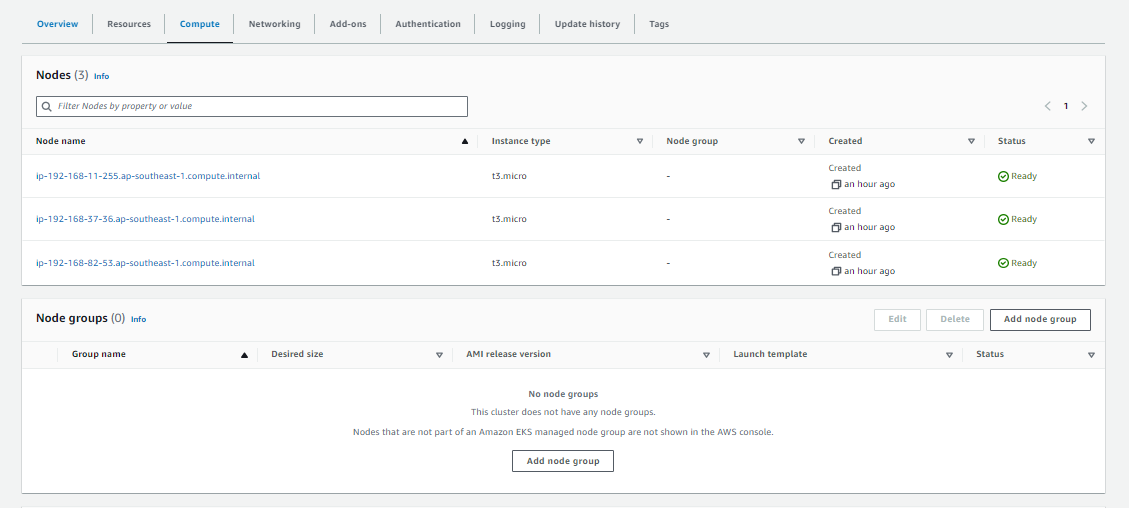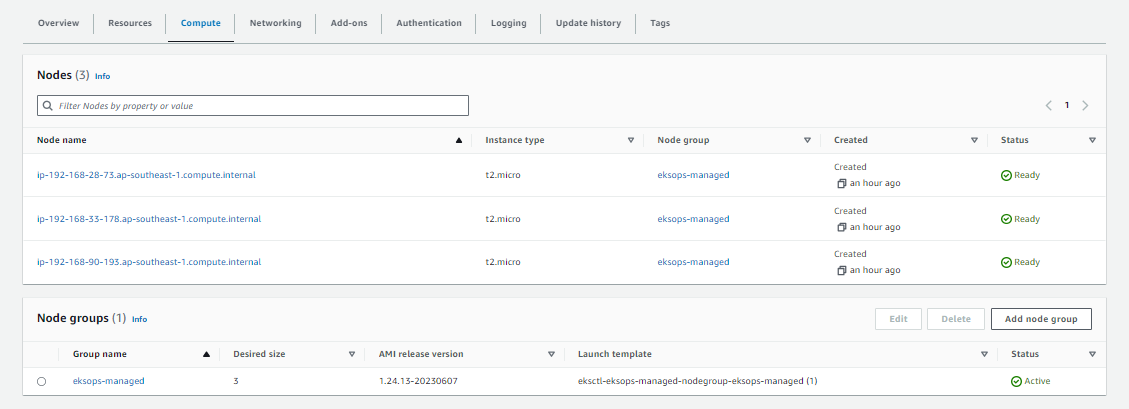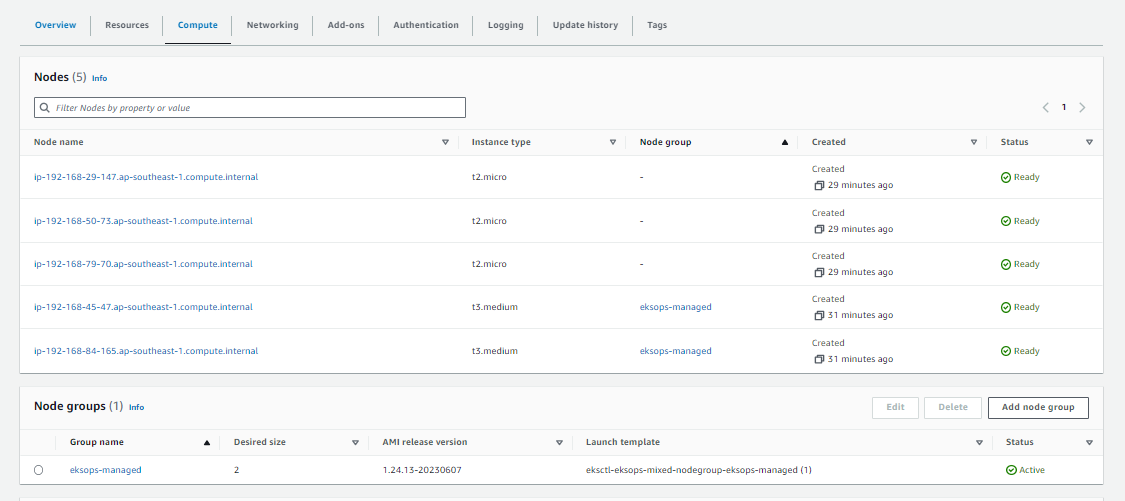All-Things-Docker-and-Kubernetes
Amazon EKS - Self-managed vs. Managed Nodegroups
Self-managed/Unmanaged Nodegroups
The Kubernetes administrator is responsible for configuring a lot of stuff with self-managed node, which includes:
- installing the kubelet,
- container runtime,
- connecting to the cluster,
- autoscaling,
- networking, and more.
Most EKS clusters do not need the level of customization that self-managed nodes provide.
Below is an example YAML file for creating an EKS cluster with self-managed nodegroup using eksctl.
apiVersion: eksctl.io/v1alpha5
kind: ClusterConfig
metadata:
version: "1.24"
name: eksops-unmanaged
region: ap-southeast-1
nodeGroups:
- name: eksops-unmanaged
instanceType: t3.micro
minSize: 0
maxSize: 5
desiredCapacity: 3
ssh:
publicKeyName: "k8s-kp"
To create the cluster:
time eksctl create cluster -f eksops.yml
From kubectl:
$ kubectl get nodes
NAME STATUS ROLES AGE VERSION
ip-192-168-11-255.ap-southeast-1.compute.internal Ready <none> 55m v1.24.13-eks-0a21954
ip-192-168-37-36.ap-southeast-1.compute.internal Ready <none> 55m v1.24.13-eks-0a21954
ip-192-168-82-53.ap-southeast-1.compute.internal Ready <none> 55m v1.24.13-eks-0a21954
From the AWS Management Console > Amazon EKS:

Managed Nodegroups
Managed node groups handle the lifecycle of each worker node for you. A managed node group will:
- come with all the prerequisite software and permissions,
- connect itself to the cluster, and
- makes it easier for lifecycle actions like autoscaling and updates.
AWS manages the servers for you - You just specify the instance type, but not the AMI. Patching can be managed for you.
In most cases managed node groups will reduce the operational overhead of self managing nodes and provide a much easier experience.
Below is an example YAML file for creating an EKS cluster with a managed nodegroup using eksctl.
# eksops-managed.yaml
---
apiVersion: eksctl.io/v1alpha5
kind: ClusterConfig
metadata:
name: eksops-managed
region: ap-southeast-1
managedNodeGroups:
- name: eksops-managed
instanceType: t2.micro
minSize: 0
maxSize: 5
desiredCapacity: 3
volumeSize: 10
ssh:
allow: true
publicKeyPath: ~/.ssh/tst-kp-ubuntu.pub
labels: {role: worker}
tags:
nodegroup-role: worker
iam:
withAddonPolicies:
externalDNS: true
certManager: true
To create the cluster:
time eksctl create cluster -f eksops-managed.yml
From kubectl:
$ kubectl get nodes
NAME STATUS ROLES AGE VERSION
ip-192-168-11-255.ap-southeast-1.compute.internal Ready <none> 55m v1.24.13-eks-0a21954
ip-192-168-37-36.ap-southeast-1.compute.internal Ready <none> 55m v1.24.13-eks-0a21954
ip-192-168-82-53.ap-southeast-1.compute.internal Ready <none> 55m v1.24.13-eks-0a21954
From the AWS Management Console > Amazon EKS:

Combining both
We can also create an EKS Cluster that has a managed node group and an unmanaged nodegroup.
## eksops.yml
---
apiVersion: eksctl.io/v1alpha5
kind: ClusterConfig
metadata:
name: eksops-mixed
region: ap-southeast-1
version: "1.24"
nodeGroups:
- name: eksops-unmanaged
instanceType: t2.micro
minSize: 0
maxSize: 3
desiredCapacity: 3
ssh:
publicKeyName: "k8s-kp"
managedNodeGroups:
- name: eksops-managed
instanceType: t3.medium
minSize: 0
maxSize: 2
desiredCapacity: 2
volumeSize: 10
ssh:
allow: true
publicKeyPath: ~/.ssh/tst-kp-ubuntu.pub
labels: {role: worker}
tags:
nodegroup-role: worker
iam:
withAddonPolicies:
externalDNS: true
certManager: true
To create the cluster:
time eksctl create cluster -f eksops.yml
From the AWS Management Console > Amazon EKS:

Resources
-
https://eksctl.io/usage/eks-managed-nodes/
-
https://repost.aws/questions/QU3b7kgBtFSCGtWW88a3fiMQ/difference-between-eks-managed-node-group-and-self-managed-node-group